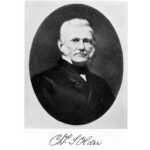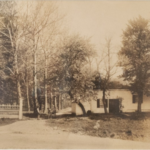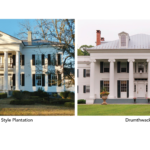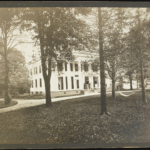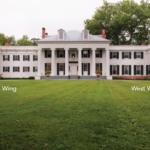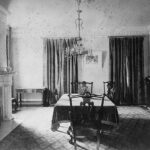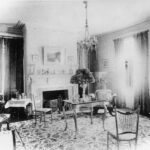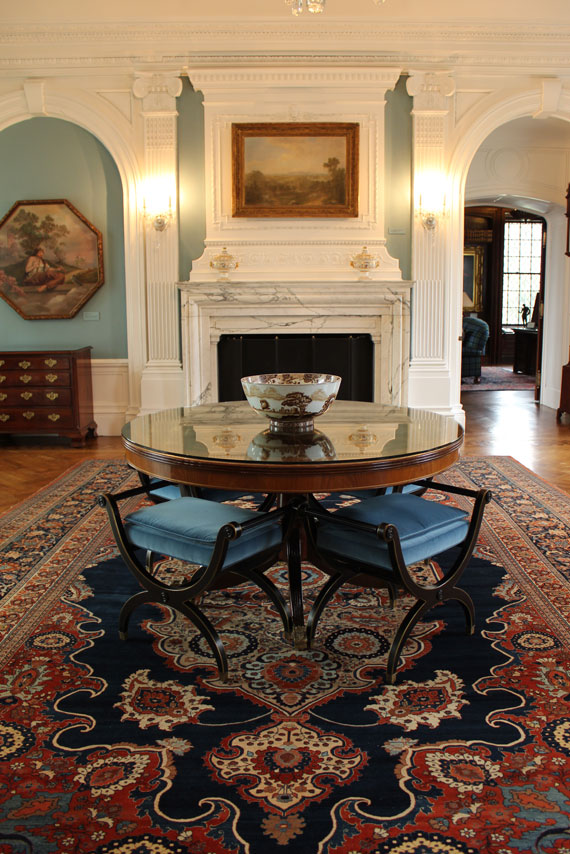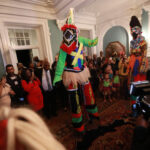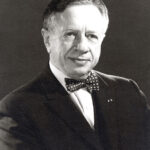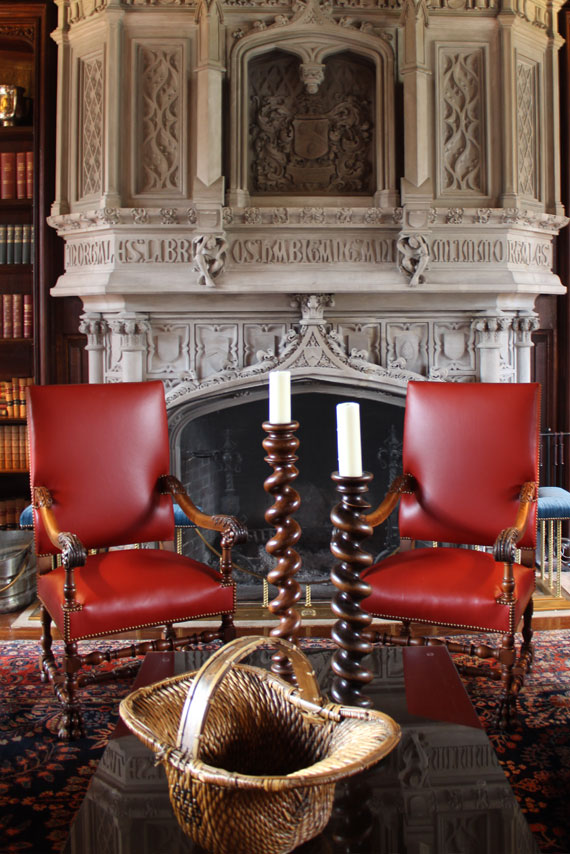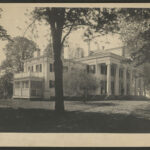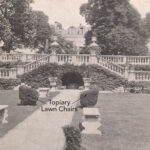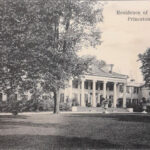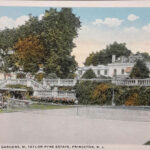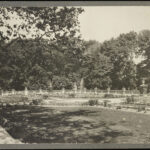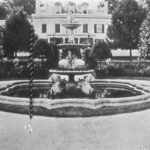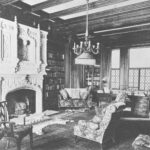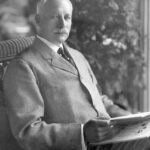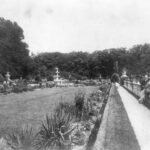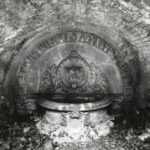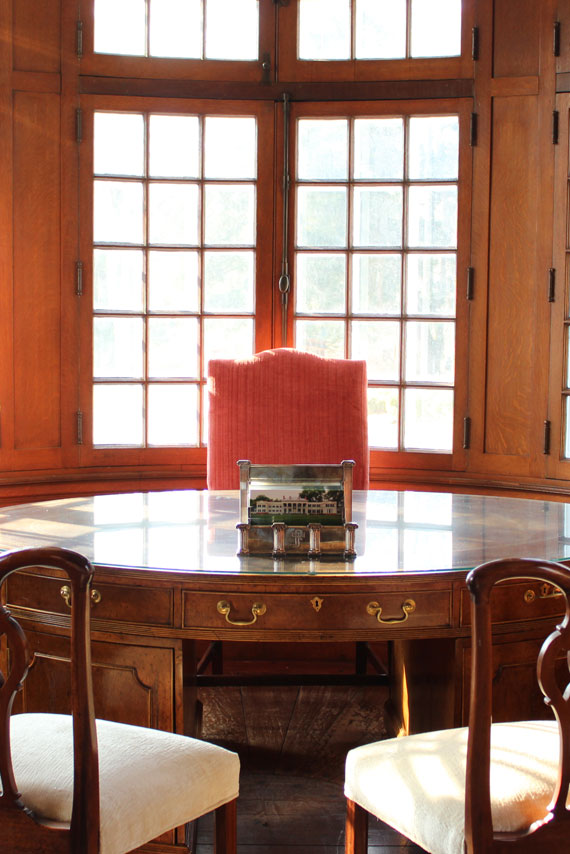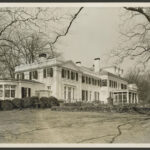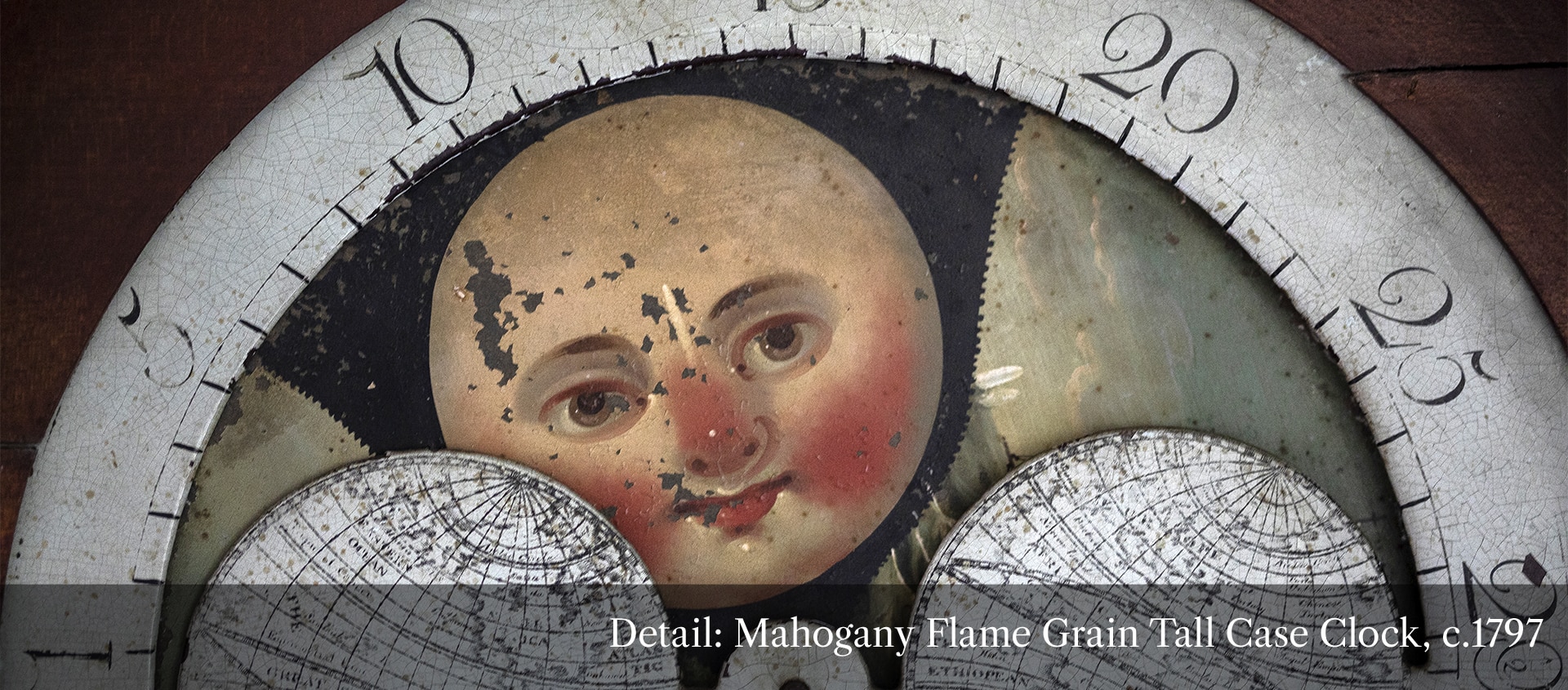
Virtual Tour
Step behind the door of “The People’s House” to take a virtual 3D tour. Explore the first-floor public rooms and interact with clickable tagged objects to learn more about the art, architecture and lives of Drumthwacket’s three private owners before it became the official residence of New Jersey governors.
“The People’s House”
Drumthwacket At A Glance
Foyer
The foyer is where the Governor and First Lady greet guests who are visiting from all over New Jersey and beyond.
Drumthwacket was built in 1835 by Charles Smith Olden. Mr. Olden was born in 1799 in the small white farmhouse that still stands on the property today. When Charles was a young man, he moved from Princeton, New Jersey, to New Orleans in the state of Louisiana and became a successful merchant. While in New Orleans, he greatly admired the Greek Revival style of homes which was inspired by plantation architecture. On his return to Princeton in 1834, Mr. Olden built Drumthwacket, in the Greek Revival style, for his new wife, Phoebe Ann Smith.
The residence was originally smaller than what it is today. The East and West wings on either side of the home were added by Drumthwacket’s second owner, Moses Taylor Pyne. Governor Olden named his new home “Drumthwacket,” a Scots Gaelic phrase meaning “wooded hill.” In 1860, Mr. Olden was elected Governor of New Jersey, becoming the first Governor to live at Drumthwacket.
Dining Room
Looking around the dining room, you will notice signs that this large room was once two rooms.
When Governor Olden built Drumthwacket in 1835, the front portion of the room was the formal parlor (a sitting room in a private house); the back was his library. The second private owner Moses Taylor Pyne removed the dividing wall and created one large dining room. Mr. Pyne entertained a larger group of guests and adapted Drumthwacket to that purpose.
Signs that this was once two rooms include the structural support beam midway through this dining area, two fireplaces, two chandeliers, and doors indicating entrances and exits for two rooms.
Parlor
As in the dining room, the parlor was originally two rooms when Governor and Mrs. Olden lived at Drumthwacket. Notice the two fireplaces, different ceiling heights, and the elaborate molding on one side versus the simpler moldings on the other
The room at the front of the house was referred to as the ‘morning room’ because it was usually bright and filled with light. Mrs. Olden would begin her day in this room. She would meet with the house staff and discuss the day’s activities.
The room at the back of the house was the dining room. Drumthwacket was built from wood, and as such, the fear of fire was always a concern. For this reason, the kitchen was located outside. Meals were prepared outdoors and brought into the residence through the door beside the fireplace.
Music Room
The Music Room is the first of three rooms added to the western side of the home by Drumthwacket’s second owner, Moses Taylor Pyne. Known as the “West Wing,” this 1900-1901 addition also includes a magnificent library as well as the Governor’s study.
With its ornate plasterwork, paneling, and beautiful grand piano, the Music Room often serves as the backdrop for fine art exhibitions by New Jersey artists. It is also used by the Governor and the First Lady for receptions such as Black History Month and Diwali, in addition to others held throughout the year.
While the Music Room serves as the gathering space for important events today, it served a much different purpose for the mansion’s third owner, Abram Spanel, who purchased the mansion in 1940 at the onset of World War II. Find Mr. Spanel’s photograph in the Music Room to learn more about his extraordinary life.
Library
The library was most likely a favorite room of Moses Taylor Pyne, who, at the age of 28, purchased Drumthwacket from Governor Olden’s widow in 1883. As Drumthwacket’s second owner, Mr. Pyne, together with his wife Margaretta, transformed Drumthwacket into a grand estate. Noted architect Raleigh C. Gildersleeve (1869-1944) was hired to add two large wings to the house: first the East wing, for a kitchen and servants’ quarters, and then the West wing with the music room, library, and study. When completed in 1905, Drumthwacket looked very much like it does today.
Mr. Pyne lived at Drumthwacket as a gentleman farmer – that is, he had cows, sheep, horses, and even peacocks on his property but hired a farmer to take care of the immense estate, which included almost 300 acres. Princetonians were welcome to stroll the grounds designed by Daniel Webster Langton, a prominent Morristown, NJ landscape architect and one of the eleven founding members of the American Society of Landscape Architects. Visitors could stop by the stables or greenhouses while meandering through the beautiful gardens that included serene ponds, bridges, fountains, and even a bowling green and lawn tennis court
Today, the property consists of 12 acres, and while the fountains and other landscape features no longer exist, visitors can enjoy the residence’s beautiful Italianate gardens, which capture the spirit of this grand era.
Governor’s Study
Located at the end of the west wing, the study is a small, horseshoe- shaped room. The door leading from the library to the study can only be locked or unlocked from inside the study to ensure Mr. Pyne’s privacy when he was reading or writing important papers. Directly opposite the room’s stone fireplace is a beautiful semi-circular bowed window.
The study looks out on the Princeton Battlefield where, on January 3, 1777, George Washington won an important battle against the British during the American Revolution. During the desperate battle, American troops led by Washington surprised and defeated a force of British Regulars. Coming at the end of “The Ten Crucial Days” which saw the well-known night crossing of the Delaware River and two battles in Trenton, the Battle of Princeton gave Washington his first victory against the British Regulars on the field.



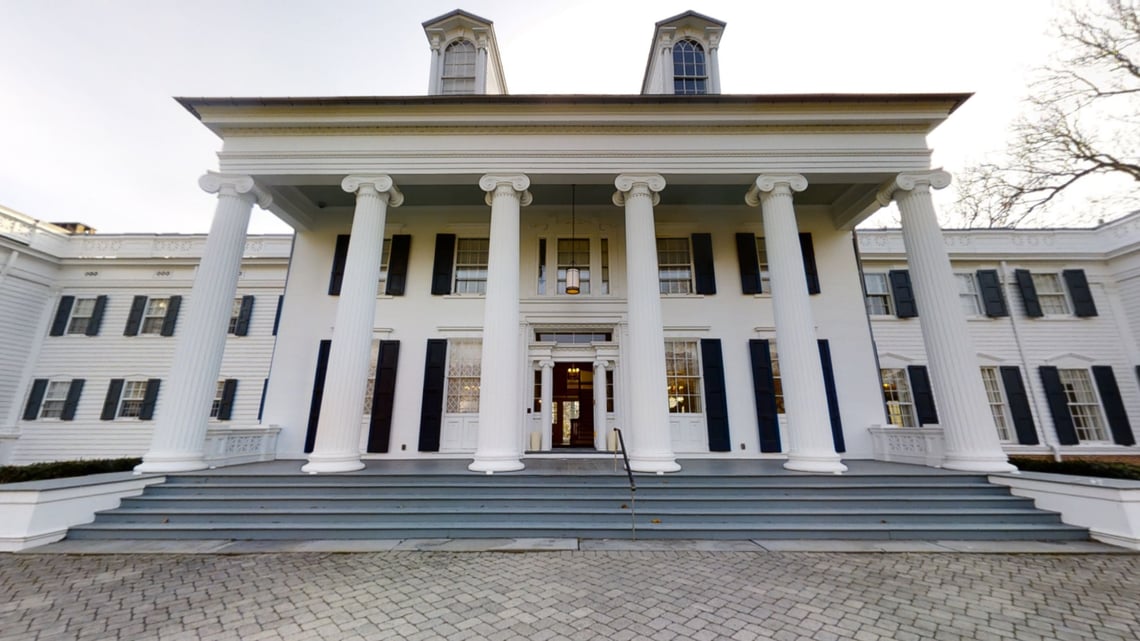 ►
Explore 3D Space
►
Explore 3D Space

